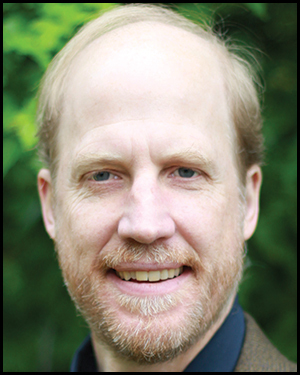A&WMA’s 54th Annual Critical Review addresses the important and timely topic of reduced nitrogen (Driscoll et al. Citation2024). The National Academy of Engineering listed managing the nitrogen cycle as one of the “14 Grand Challenges for Engineering for the 21st Century” (NAE Citation2008). The production of chemical nitrogen fertilizers supports a large and growing worldwide human population. However, the excess nitrogen leakage from agriculture and nitrogen emissions from energy and transportation cause significant problems in natural ecosystems and adversely affect public health and welfare. Excess nitrogen affects both water and air quality, impacting large-scale natural ecosystems and the global climate. Gorman (Citation2013) described the long history of human effects on the nitrogen cycle.
Why focus on reduced nitrogen? The inert form of nitrogen (N2) makes up nearly 80% of the clean air we safely breathe. Yet, when the N2 molecule is separated into its two constituent atoms by combustion or other mechanisms, those free atoms combine with other elements to form reactive compounds that can sometimes benefit, but often harm health and welfare. Reactive nitrogen compounds (Nr) include many oxides of nitrogen (e.g., NO and NO2, called NOx), as well as reduced nitrogen – i.e., ammonia and ammonium (NH3 and NH4+, called NHx) plus some organic compounds (U.S. EPA-SAB Citation2011).
This Critical Review explains how recent measures taken to prevent adverse effects have successfully limited U. S. emissions of oxides of nitrogen, but that atmospheric reduced nitrogen concentrations remain excessive. The review details potential impacts of NHx and explains the need for further scientific analysis and continued work to address its adverse effects.
Structure of the Critical Review
The review begins with a brief introduction summarizing the role of NH3 in the nitrogen cycle. The second section focuses on NHx effects. Atmospheric NH3 can combine with oxides of sulfur and nitrogen to form fine particles with associated adverse effects on health and visibility. Increased particle pollution also influences solar radiation and cloud formation with complex effects on climate. Airborne nitrogen deposition on croplands can promote plant productivity, but it can cause widespread harm to natural ecosystems and increase climate-forcing soil N2O emissions. Today, most extensively managed ecosystems are adversely affected by elevated nitrogen deposition, and NHx is often the largest contributor. While the ecosystem effects of increased nitrogen deposition are established, there is limited understanding of the pathways and timescales of recovery from elevated nitrogen deposition, as well as differences in effects of oxidized vs reduced nitrogen.
The third section explains atmospheric emissions, transport, and fate of NH3, along with its role in secondary inorganic aerosols formation, noting uncertainties in associated chemical processes. In addition, uncertainties remain in NH3 sources and sinks. Land surfaces can act as an NH3 sink, but also as an NH3 source, reemitting previously deposited NH3. Although the underlying processes are understood, incorporation of bi-directional exchange into air quality and climate models is an area of active research limited by the lack of direct deposition measurements. Modeling assessments are also hindered by uncertainties in direct emissions from agriculture and combustion. The review summarizes progress made on understanding NH3 emissions, which is complicated by the fact that agricultural activities account for more than 80% of emissions and are difficult to quantify. The review also observes that top-down emission estimates using satellite data and atmospheric chemistry models suggest that current NH3 emissions are underestimated in the U.S. Environmental Protection Agency’s (EPA) National Emission Inventory.
The fourth section describes efforts to manage excess nitrogen via several parts of the U.S. Clean Air Act and by setting Total Maximum Daily Loads (TMDLs) for water discharges under the U.S. Clean Water Act. The review notes the lack of a U.S. National Ambient Air Quality Standard (NAAQS) to address ecological effects of nitrogen deposition and contrasts that with European limits based on critical loads. The review calls attention to the absence of U.S. emissions standards for agricultural sources of NH3 emissions.
EPA’s Science Advisory Board (U.S. EPA-SAB Citation2011) reviewed the importance of excess Nr, recommended additional monitoring and assessment, and emphasized the need for coordinated, integrated planning of mitigation efforts. The review highlights progress made in understanding Nr since 2011 and identifies remaining scientific and regulatory issues. The review concludes by identifying gaps in information and regulation and provides recommendations for needed research and policy developments. The review emphasizes the need to maintain robust surface air and deposition monitoring networks both to complement developing satellite technology and chemical transport models, and to support research and policy development. The authors call on EPA to reconsider regulatory limits on NH3 emissions and nitrogen deposition.
About the Critical Review authors
The qualifications of the authors lend credibility and relevance to this Critical Review.
Charles T. Driscoll, lead author, organizer, and presenter, is a University Professor of Environmental Systems and a Distinguished Professor in the Department of Civil and Environmental Engineering at Syracuse University in Syracuse, NY. Driscoll has advanced new analytical techniques, established and maintained long-term measurements and experiments, and developed a series of research and predictive models that simulate transformations of major chemical elements in forest vegetation, soil, and surface waters in response to air pollution, climate, and land disturbance. His goals include improving and advancing science communication. Driscoll was elected as a Member of the National Academy of Engineering in 2007. In 2023 he was awarded the prestigious Clarke Prize in Water Science from the National Water Research Institute. He is a fellow of the American Association for the Advancement of Science. A 1974 distinguished Civil Engineering graduate of the University of Maine, Driscoll received his master’s and Ph.D. in Environmental Engineering from Cornell University (1976, 1980).
Michael Bell contributes information about critical loads and expected ecosystem responses to current deposition levels. Bell is an Ecologist with the U.S. National Park Service Air Resources Division in Lakewood, CO. He collaborates with scientists and data analysts from universities and other federal agencies to determine harmful deposition thresholds and to standardize decision-making processes. He has led efforts to inform park resource management, respond to permit applications, and influence federal policy. He is also currently Chair of the National Atmospheric Deposition Program’s (NADP) Executive Team and an active member of the NADP’s Critical Loads of Atmospheric Deposition and Total Deposition Science Committees. Bell earned his B.S in Ecology and Evolution at the University of California, Santa Barbara (2004) and his Ph.D. in Botany and Plant Sciences at the University of California, Riverside (2012).
Daven Henze is a Professor of Mechanical Engineering at the University of Colorado, Boulder where he conducts analysis and modeling of chemical and physical processes affecting air quality, including chemical data assimilation combining models and observations. His work encompasses remote sensing, adjoint sensitivity analysis, inverse problems, and source apportionment. He serves on the panels advising the U.S. EPA Clean Air Scientific Advisory Committee (CASAC) in their consideration of NAAQS for Lead and for Secondary NAAQS for Oxides of Nitrogen, Oxides of Sulfur, and Particulate Matter. Henze is also a member of multiple teams advancing the scientific use of NASA and NOAA satellite data. Henze earned a B.S. in Chemistry and Chemical Engineering at the University of Washington (2001), and his M.S. and Ph.D. in Chemical Engineering at the California Institute of Technology (2004, 2007).
Jana Milford is Professor Emerita of Mechanical Engineering at the University of Colorado, Boulder. Her research and teaching interests focus on air quality modeling and data analysis, thermal sciences, environmental impacts of energy systems, and environmental law and policy. She also conducts interdisciplinary research on the use of science in environmental decision-making. Milford is a member of the Health Effects Institute’s Research Review Committee. She previously served as member and chair of the Colorado Air Quality Control Commission and is a past member of the Board of Environmental Studies and Toxicology of the National Academy of Sciences and the Science Advisory Board of the U.S. Environmental Protection Agency. She holds a B.S. in Engineering Science from Iowa State University (1983), a M.S. in Civil Engineering and Ph.D. in Engineering and Public Policy from Carnegie Mellon University (1985, 1988), and a J.D. from the University of Colorado School of Law (2004).
Comments invited
A&WMA members and guests are invited to read, attend, and comment on the 54th Annual Critical Review at A&WMA’s 117th Annual Conference & Exhibition to be held in Calgary, Alberta, June 25–27, 2024. The presentation of the review and commentary by invited discussants is planned for Thursday, June 27, 8:00–10:00 a.m. MDT. The invited discussants include Jeffrey L. Collett (Colorado State University), Carla Davidson (Endeavour Scientific), and Greg Wentworth (Alberta Environment and Protected Areas). The discussants will provide their perspectives on the sources, transformation, effects, and management of atmospheric reduced nitrogen, and will agree (or disagree) with the narrative and conclusions of the reviewers and of one another. They may identify additional issues and offer alternative commentary.
Additional comments will be solicited from the floor and via written submissions to the Critical Review Committee Chair. The Chair will condense and summarize these points in the October issue of JA&WMA. Members are encouraged to suggest topics and authors for future critical review papers and apply for membership on the Critical Review Committee to participate actively in the process.
Acknowledgment
In collaboration with Dr. Schichtel and Ms. Wierman, the following additional members of the Critical Review Committee helped identify and select the review topic and lead author and commented on drafts: Sam Altshuler, Viney Aneja, Gary Casuccio, Chih C. Chao, Judith Chow, Prakash Doraiswamy, John Kinsman, Michael Kleinman, Randal Martin, Roya Mortazavi, Harish Rao, Eric Stevenson, and John Watson.
Additional information
Notes on contributors

Susan S.G. Wierman
Susan S.G. Wierman is a lecturer in the Engineering for Professionals Program at the Johns Hopkins University. Before retiring in 2017, Wierman served for 21 years as the Executive Director of the Mid-Atlantic Regional Air Management Association. Wierman is Chair of A&WMA’s Critical Review Committee.

Bret Schichtel
Bret A. Schichtel is a Research Physical Scientist in the Air Resource Division of the National Park Service and an affiliate with the Cooperative Institute for Research in the Atmosphere at Colorado State University. Schichtel is a member of A&WMA’s Critical Review Committee.
References
- Driscoll, C., J.B. Milford, D.K. Henze, and M.D. Bell. 2024. Atmospheric reduced nitrogen: Sources, transformations, effects, and management. J. Air Waste Manage. Assoc. 74 (6): 362–415.
- Gorman, H.S. 2013. The story of N: A social history of the nitrogen cycle and the challenge of sustainability. New Brunswick, New Jersey: Rutgers University Press.
- National Academy of Engineering (NAE). 2008, updated 2017. NAE grand challenges for engineering. Grand challenges report published. Accessed March 25, 2024. www.engineeringchallenges.org.
- U.S. EPA-SAB. 2011. Reactive nitrogen in the United States: An analysis of inputs, flows, consequences and management options. A report of the EPA Science Advisory Board.
